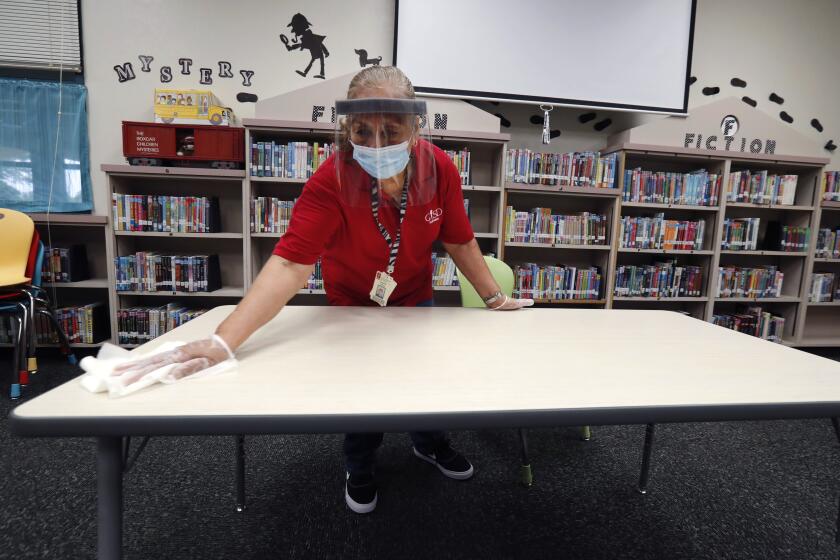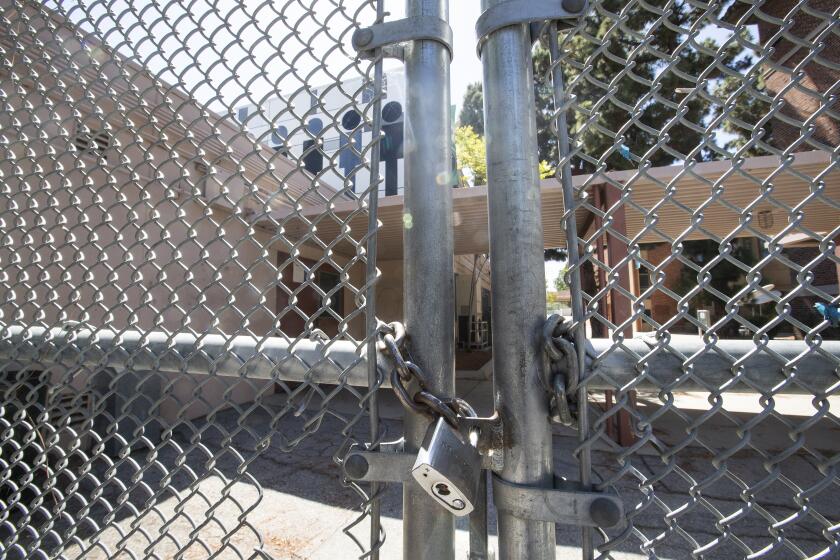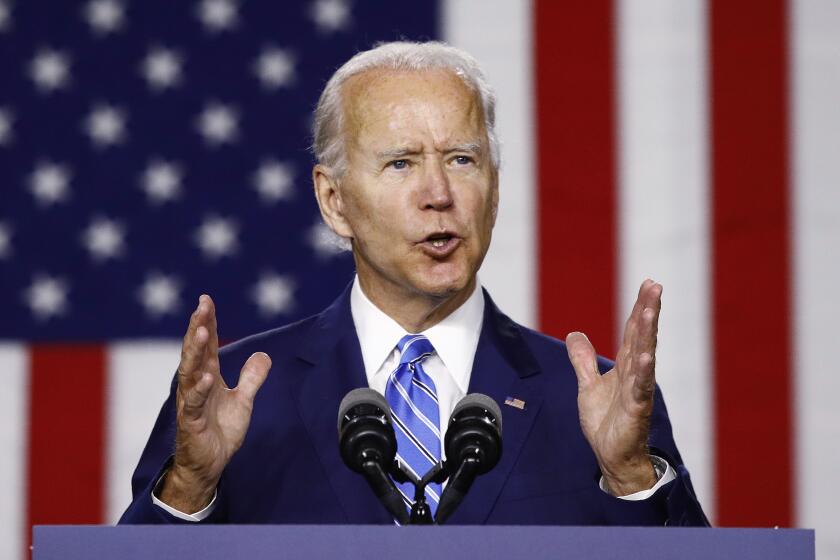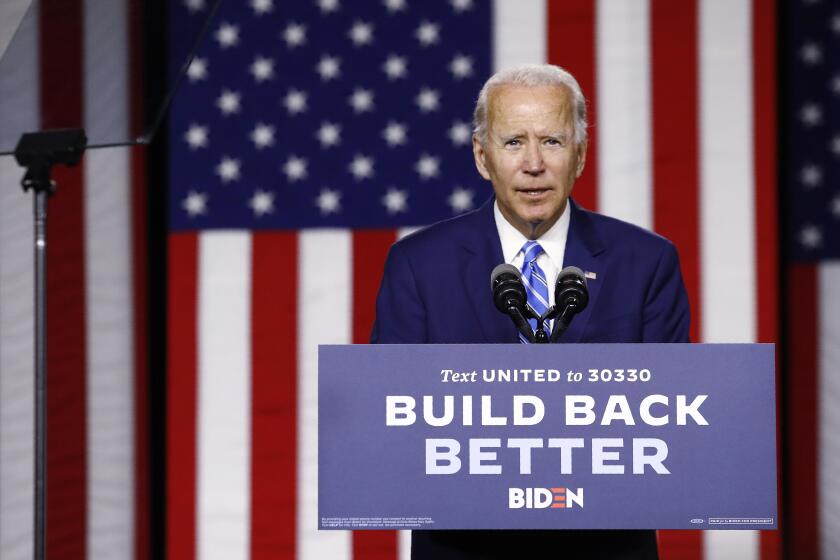Public vs. private (and pandemic): Joe Biden’s and President Trump’s education policy stances diverge
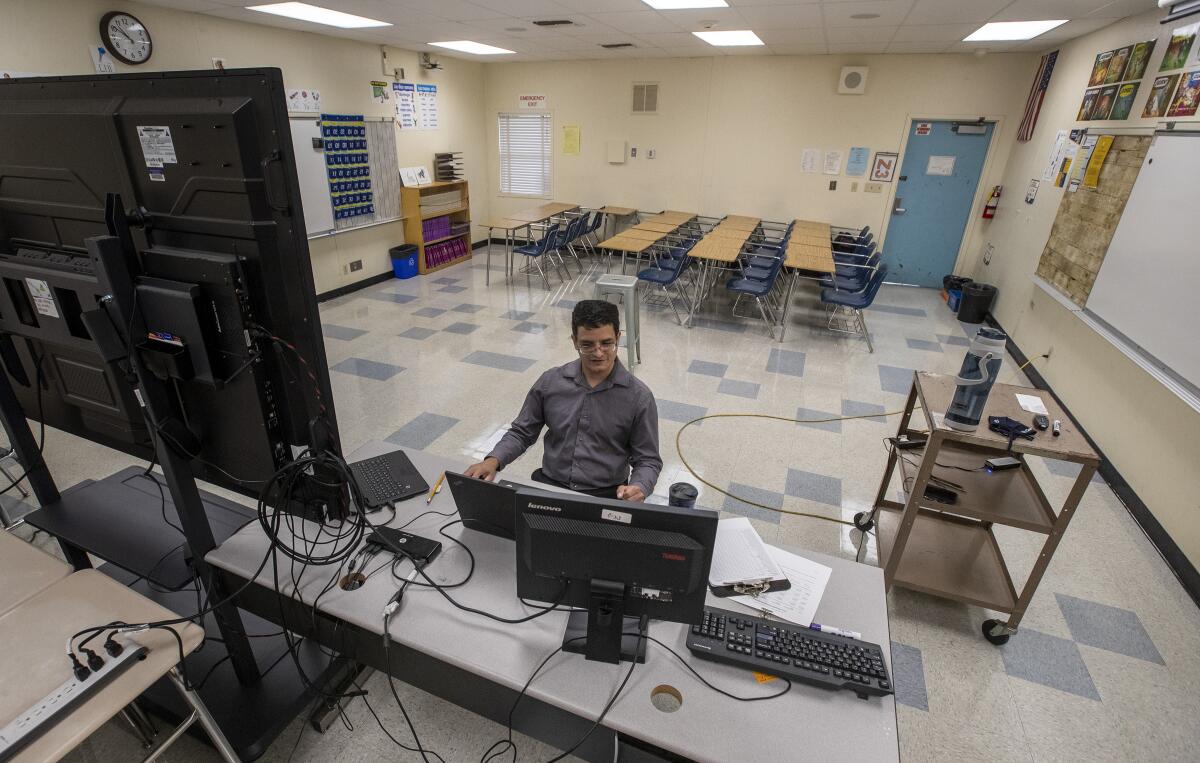
WASHINGTON — Kindergartners skipping enrollment, grade-schoolers struggling on Zoom, college students falling to coronavirus outbreaks — the COVID-19 pandemic has upended schooling in the U.S. and placed education policy in a rare spotlight.
But the debate over how to reopen schools and contain the virus that closed them isn’t the only education policy concern that will be on the ballot in the coming presidential election, with Democratic nominee Joe Biden and President Trump diverging widely in how they would approach that issue and many others.
College affordability, sexual assault policies and charter schools could all see widespread changes depending on who wins the November election.
Trump and controversial Secretary of Education Betsy DeVos have aimed to redirect traditional public school funding toward charter, private and religious alternatives; repeatedly tried to cut Education Department funding; and moved away from top-down federal guidelines.
Trump has also leveraged schools in a grab bag of other related fights, including the Israeli-Palestinian conflict, gun control and transgender student’s civil liberties.
Former Vice President Joe Biden’s platform focuses on college affordability and the student debt crisis, and he promises to reinstate many Obama-era guidelines that Trump rolled back, such as Title IX sexual misconduct policies.
President Trump
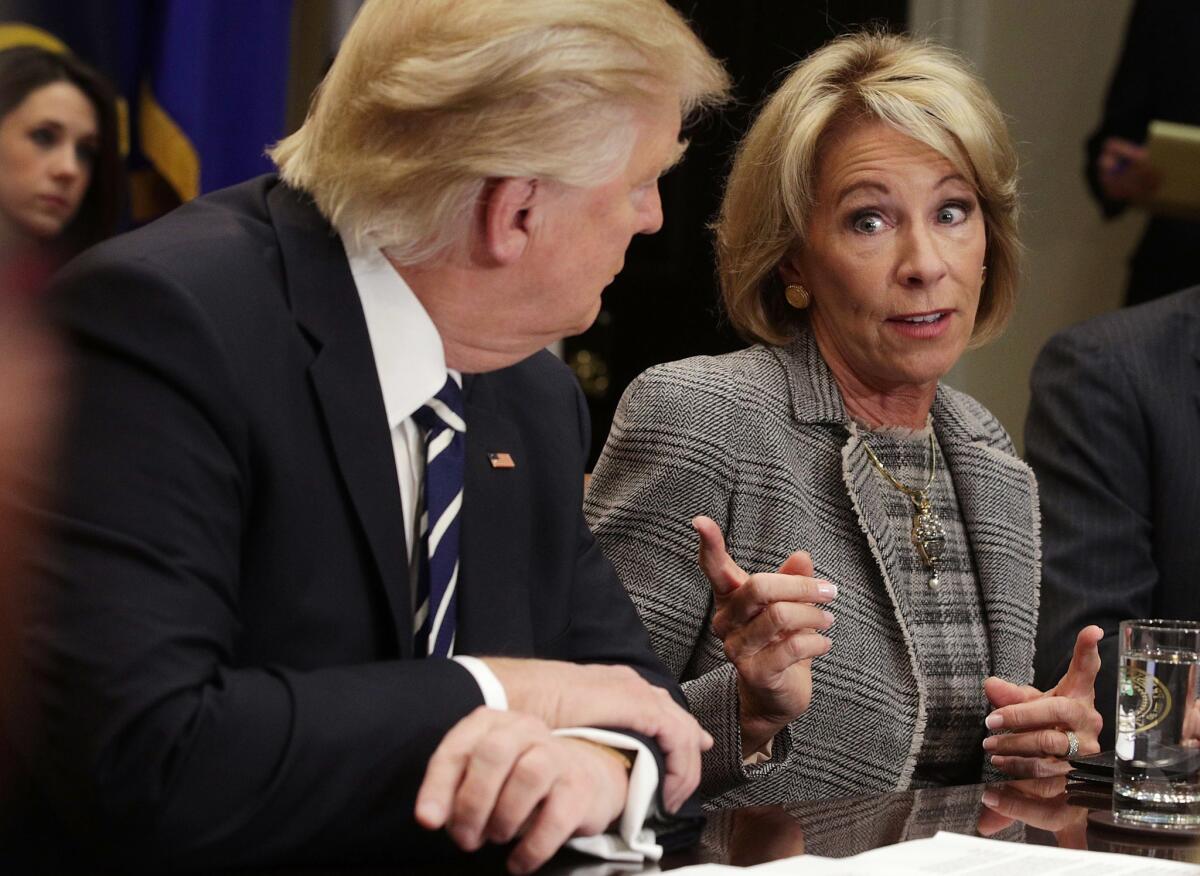
Trump and DeVos have aimed to reduce the role the federal government plays in education, including through proposed cuts to the department’s budget and the loosening of federal guidelines.
Yet in the age of COVID-19 that approach has inverted, with Trump switching from federalist devolution to top-down pressure as he spent the summer pushing schools nationwide to reopen for in-person learning — even as the pandemic’s domestic death toll barreled on. It has now killed more than 200,000 people in the U.S.
President Trump took a hard-line approach in calling for schools to reopen despite the coronavirus. Parents describe a complex swirl of emotions.
The president went so far as to threaten school districts with the loss of federal funding if they didn’t reopen. And although senior administration officials anonymously told reporters he wasn’t proposing that funds be used to pressure local and state officials, DeVos repeated the threat.
Despite conceding in late July that schools in hot spots might have to “delay reopening for a few weeks” — at a time when cases were surging nationwide and California was seeing record-high deaths — even then Trump maintained that “every district should be actively making preparations to open.”
As recently as Sept. 28 he was urging governors to reopen K-12 schools for in-person learning by using millions of rapid coronavirus tests — set for distribution to the states by the federal government — to test students.
Trump’s handling of the reopening question has been met by criticism from many teachers, parents and school officials, with a July statement signed by the two largest teachers unions criticizing “conflicting guidance” and the lack of a comprehensive plan.
The president has similarly butted heads with the federal Centers for Disease Control and Prevention, criticizing the agency’s recommendations — which included students and teachers wearing masks when feasible and using staggered schedules — as too costly and restrictive. And references he’s made to children being nearly immune to COVID-19 (a recurring theme in his campaign to reopen schools) were contradicted by CDC research released in late September.
Policymakers and parents have weighed the health risks of opening schools against the potential problems with keeping students at home, including a lack of access to nutrition, difficulties for working parents and child development concerns.
Trump judged the Los Angeles Unified School District’s decision in July not to reopen campuses for in-person learning a “mistake.”
LAUSD Supt. Austin Beutner announced Monday that the nation’s second-largest school system will continue with online learning until further notice.
The Trump campaign website does not include a section on policy proposals, on education or any other issue, for a second term. But his actions in the last year make his focus clear. Beyond the immediate concerns of the pandemic, privatization has been at the heart of education policy for Trump and DeVos. At the center of that push is the idea of “school choice,” or the policy of directing public money toward education options beyond traditional public schools — for instance, charter or private schools.
Critics question the funneling of public money into private institutions. And they worry about discrimination in charter school admissions and what it means for the separation of church and state if public money goes into the coffers of private religious schools.
Trump, however, has framed these policies, which include programs such as voucher systems and tax credit scholarships, as providing disadvantaged students with more flexibility in the schools they can attend.
Trump and DeVos have paired their “school choice” with repeated calls to cut spending on public schooling. Trump’s fiscal year 2018 budget proposal would have reduced discretionary funding for the Department of Education by 13.5%, while adding $168 million for charter schools and $250 million for a new private school choice program. It also called for the elimination or reduction of more than 20 programs, and cut $1.2 billion in summer programs and before- and after-school programs. The $1.3-trillion omnibus spending bill that Congress ultimately approved largely ignored Trump’s proposed budget.
This trend continued throughout Trump’s presidency, with budget plans consistently aiming to cut billions from the education budget while proposing increases to the money going toward privatization.
Beyond education policy itself, Trump has turned schools into battlegrounds for other debates. This includes calling for teachers to be armed against school shootings, reopening an investigation into campus anti-Semitism that some student activists saw as a politicized cudgel against criticism of Israel, and lifting Obama-era guidelines that had encouraged the use of race in admissions decisions and allowed transgender students to use bathrooms and locker rooms matching their gender identity.
Trump and DeVos have also reversed Obama-era guidelines regarding Title IX — a law prohibiting sex discrimination in federally funded schools that plays a central role in how schools handle sexual assault cases. DeVos announced changes in May that more narrowly defined sexual misconduct and gave students accused of such conduct stronger due process protections. Critics, including then-University of California President Janet Napolitano, argued the changes weaken efforts to reduce campus assaults.
Joe Biden
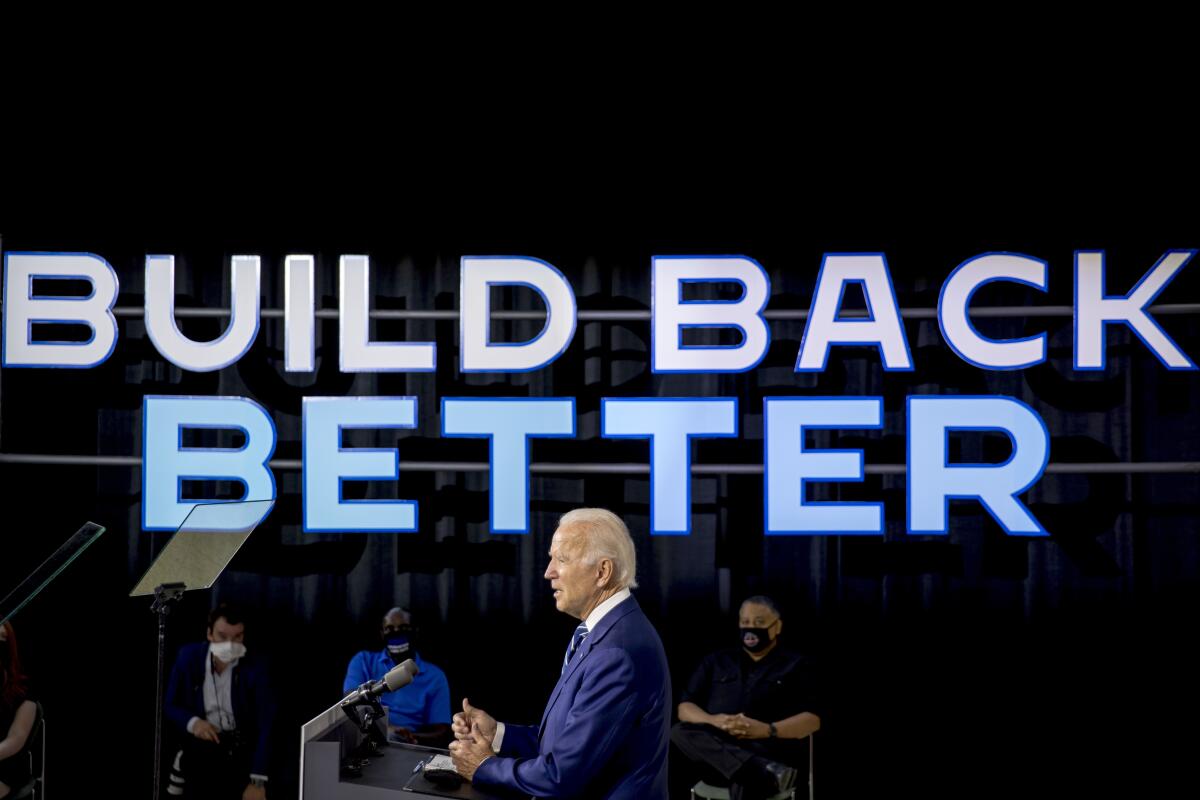
The former vice president’s policy proposals and his work in the Obama administration shed light on what a Biden White House might look like when it comes to America’s schools — including college affordability programs and liberal stances on social issues.
Front and center right now are his criticisms of how Trump has handled the pandemic, including the question of school reopenings.
“If President Trump and his administration had done their jobs early on with this crisis, America’s schools would be open and would be open safely,” Biden said in early September. “Instead, American families all across this country are paying the price for his failures.”
Biden has called for reopening decisions to be made based on science rather than political pressure and on a place-by-place basis rather than nationwide. A plan he proposed in mid-July would create federal guidelines for safe reopenings, charging agencies like the CDC with establishing “basic, objective criteria” such as reducing class sizes or making plans to accommodate at-risk teachers and students — although the proposal left final decisions to state and local officials.
“Forcing educators and students back into a classroom in areas where the infection rate is going up or remaining very high is just plain dangerous,” Biden said at the time.
Joe Biden has unveiled a plan to reopen schools in the era of coronavirus as President Trump says he will pressure officials to put children back in classrooms.
Teacher unions, whose support is important to Democrats, have been apprehensive about reopening plans. During a videoconference with the National Education Assn. in early July, Biden called for more money to go toward safety measures. He’s also pledged to send Congress an emergency funding package worth as much as $30 billion that would help prepare schools to safely reopen.
On other issues, he represents a similar contrast with Trump. He’s come out strongly against federal funding of for-profit charter schools, saying that doing so “siphons off money from public schools, which are already in enough trouble.”
Biden supports “providing two years of community college or other high-quality training program without debt for any hard-working individual,” according to his campaign website. It’s a policy he also proposed in 2015, alongside Obama. Under the program, the federal government would cover three-quarters of the cost, with states covering the rest (except in the case of Indian tribes that operate community colleges for low-income students, in which federal support would cover up to 95%). Biden has also endorsed tuition-free public college for families earning under $125,000.
Biden has called for setting the repayment rate on federal undergraduate student loans at 5% of discretionary income over $25,000, with individuals making less than that neither owing payments nor accruing interest. After 20 years, the remainder of the loans would be fully forgiven for everyone who responsibly made their payments.
And in a policy he described as aligning his college tuition proposals with his student debt proposals, he added in an April blog post, “I propose to forgive all undergraduate tuition-related federal student debt from two- and four-year public colleges and universities for debt-holders earning up to $125,000, with appropriate phase-outs to avoid a cliff.”
He’s also said he would triple funding for Title I, a federal program that could help pay teachers more competitive salaries.
Other Biden proposals include doubling the maximum value of Pell grants, investing $50 billion in workforce training programs, doubling the number of health professionals in schools and providing universal pre-kindergarten for 3- and 4-year-olds.
Joe Biden outlines a plan to overhaul the nation’s caregiving system and create 3 million jobs while freeing up millions to enter the workforce.
Separate policy stances that nevertheless have implications for American schools — such as a guarantee that transgender students will have access to bathrooms and locker rooms consistent with their gender identity — are noted elsewhere in his platform.
His plan to “end violence against women” lays out a multipart response to campus sexual assault, including increased preventive education, expanded reporting rights for survivors and a return to the Title IX guidelines of the Obama years.
The education policy page on Biden’s campaign website cites plans to reinstate Department of Education support for schools “legally pursuing desegregation strategies and recognized institutions of higher education’s interests in creating diverse student bodies.” Trump had rescinded Obama-era guidelines encouraging the use of race to help determine admission to educational institutions.
Biden also takes a swipe at Trump’s response to school shootings, arguing that “arming teachers isn’t the answer” and instead advocating for gun control legislation.
Biden’s choice for vice president, California Sen. Kamala Harris, had focused her own education policy proposals on the teacher pay gap and funding education for science, technology, engineering and math at historically Black colleges and universities.
More to Read
Get the L.A. Times Politics newsletter
Deeply reported insights into legislation, politics and policy from Sacramento, Washington and beyond. In your inbox three times per week.
You may occasionally receive promotional content from the Los Angeles Times.
